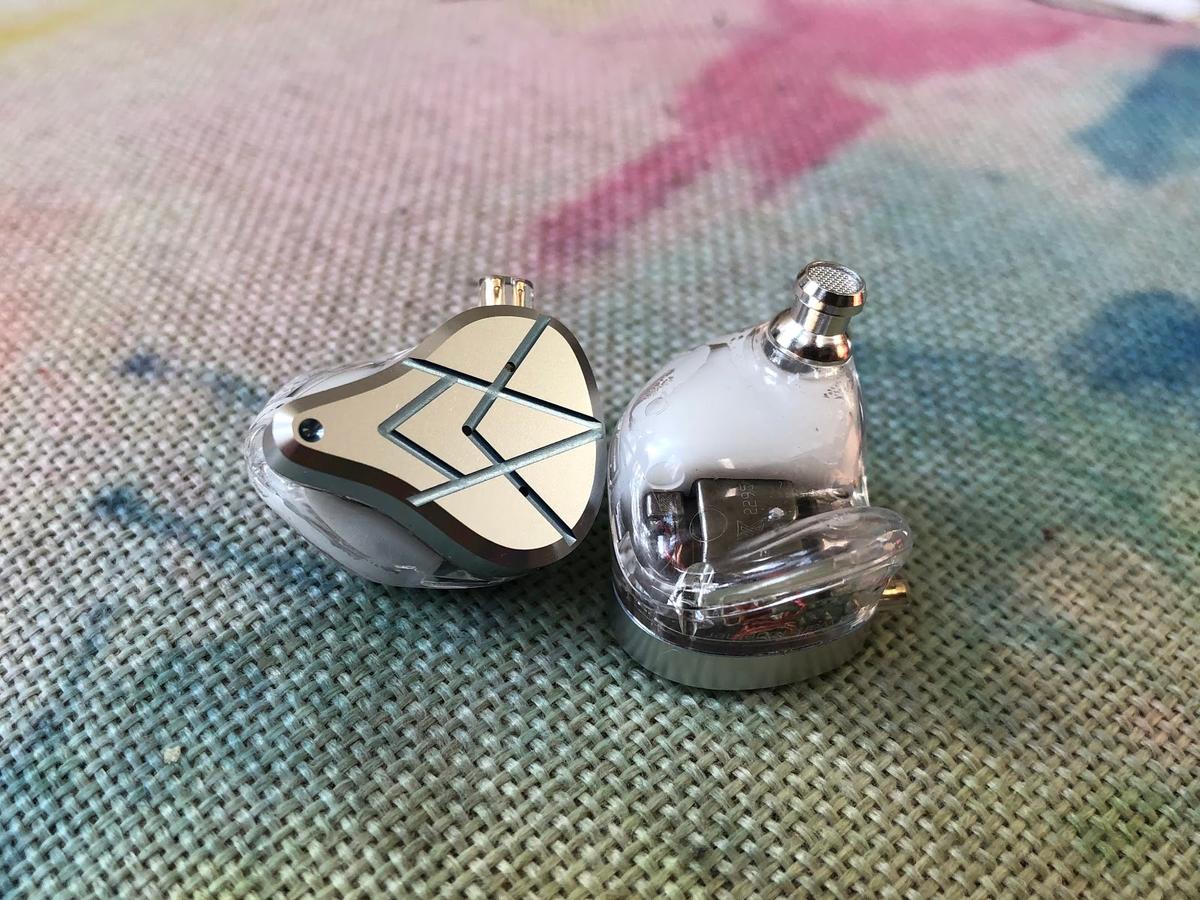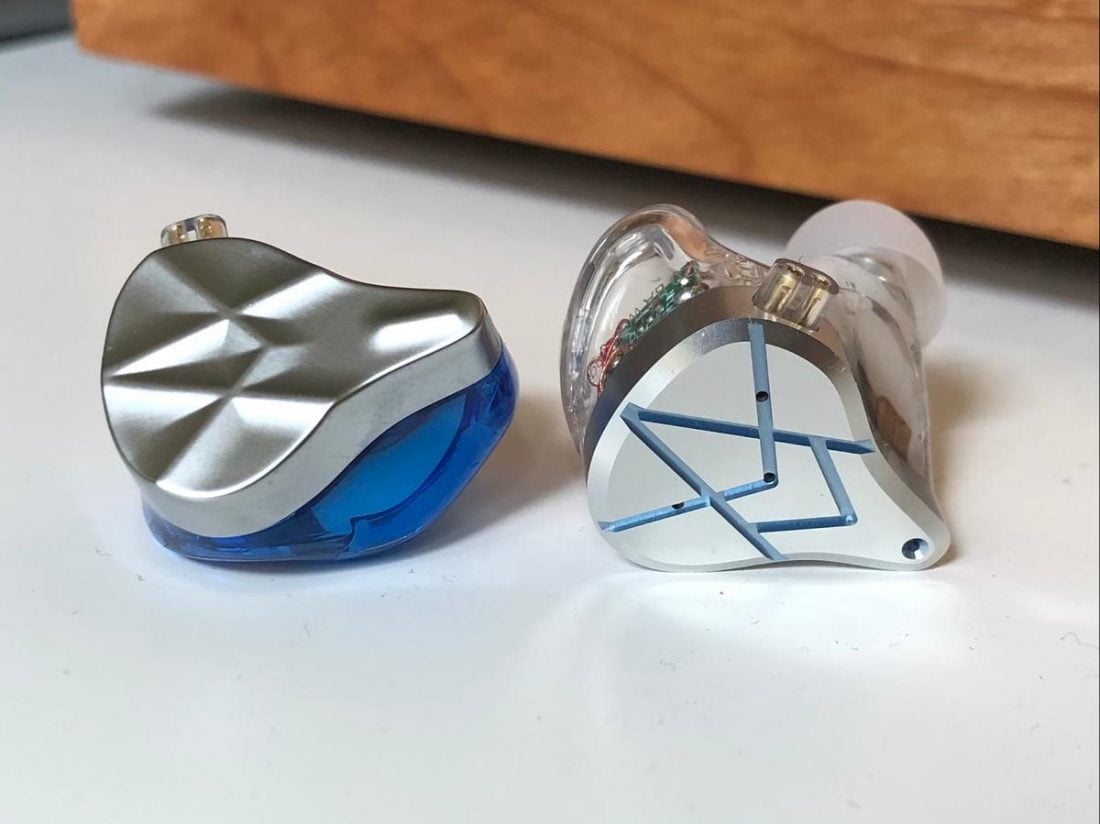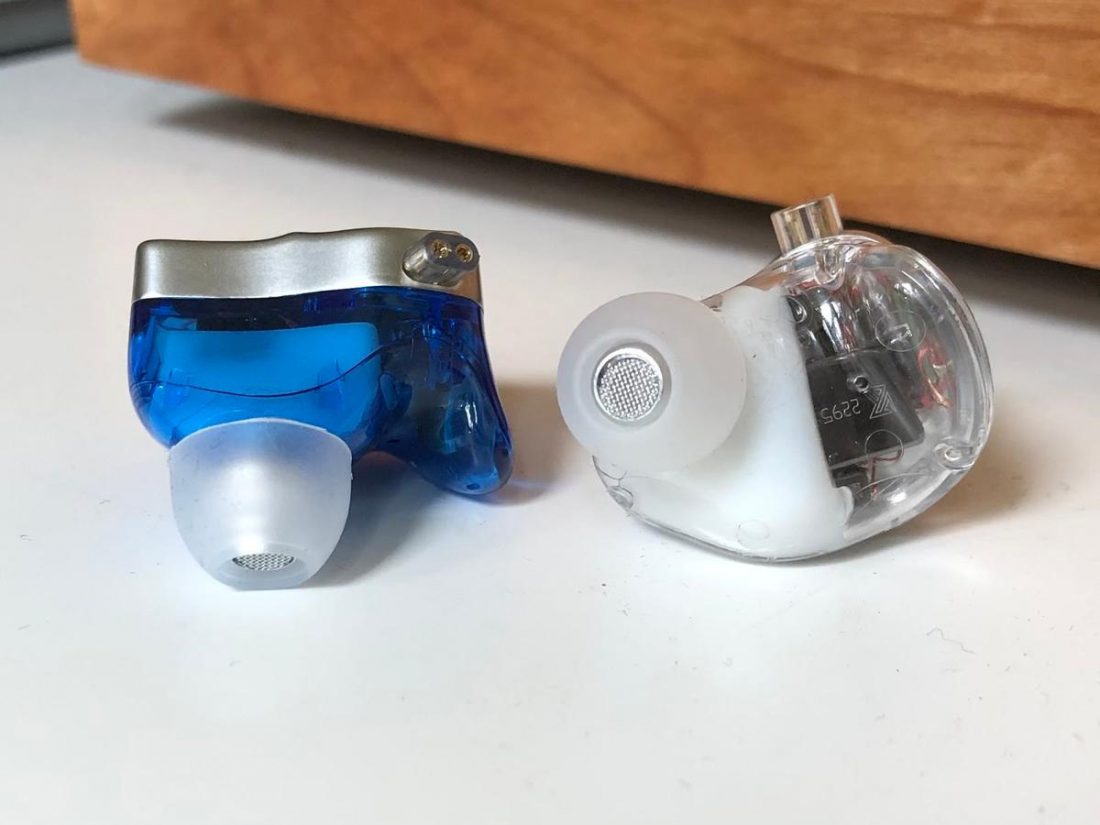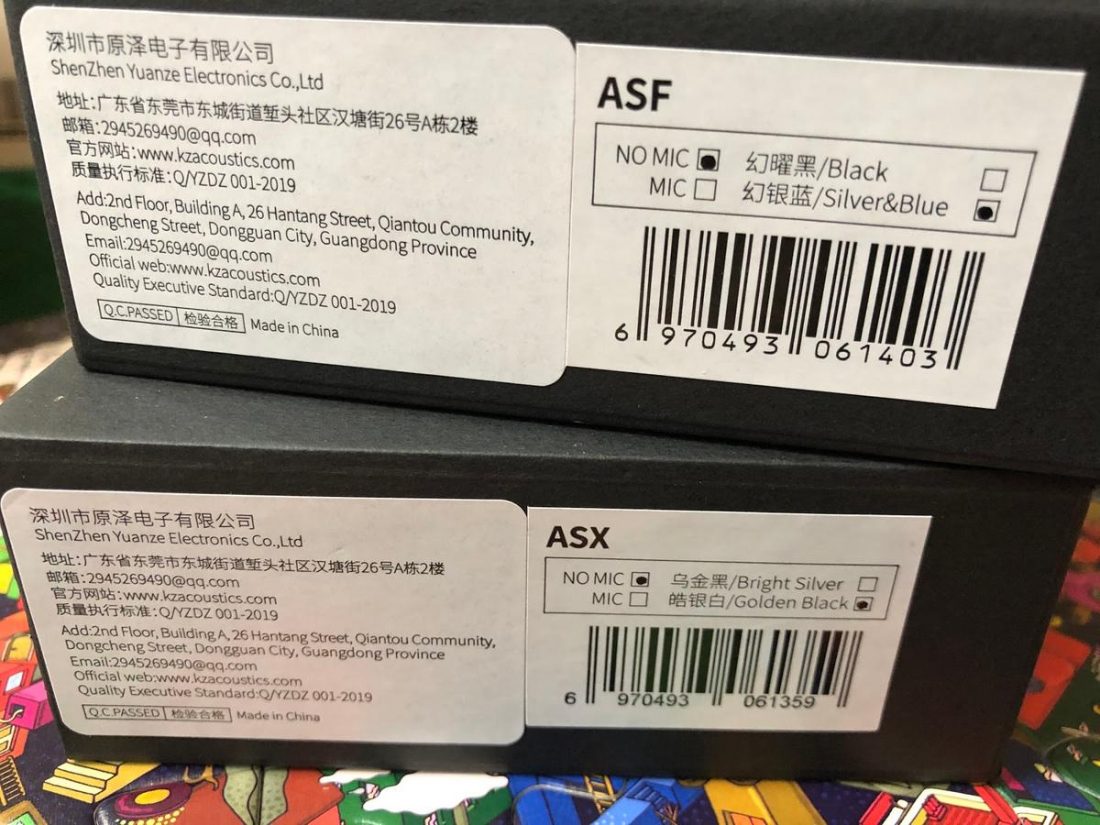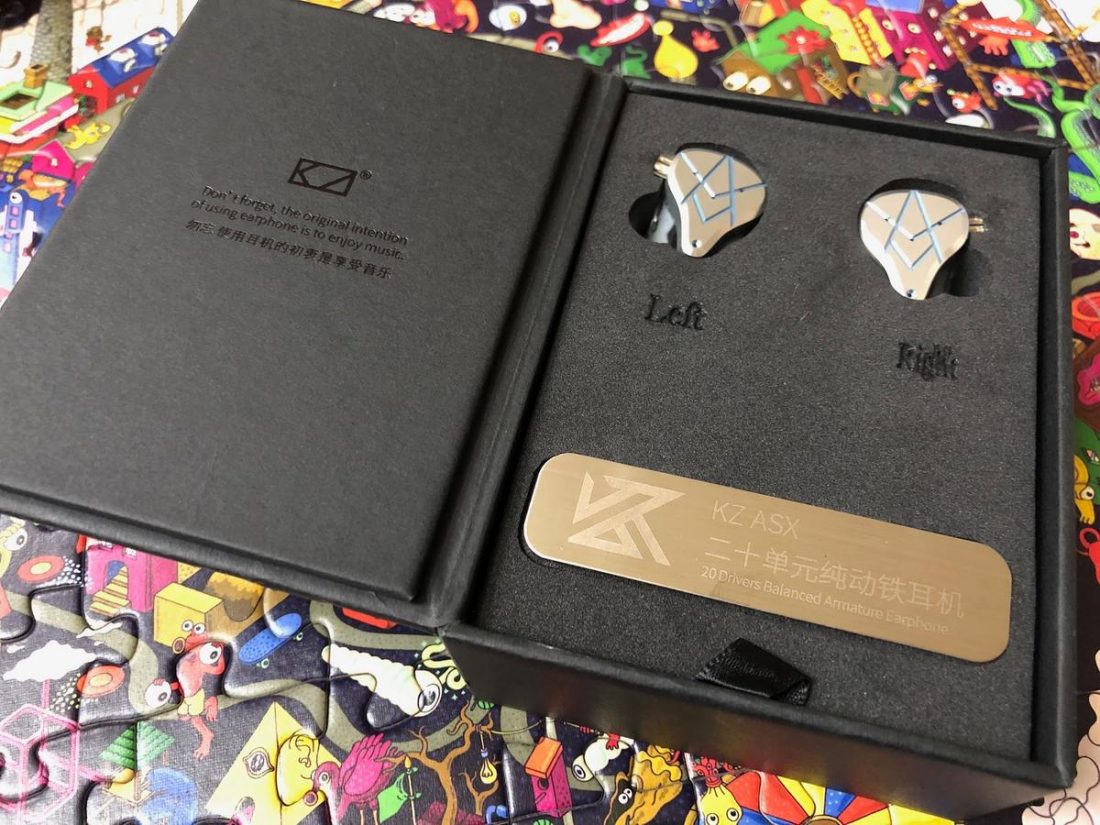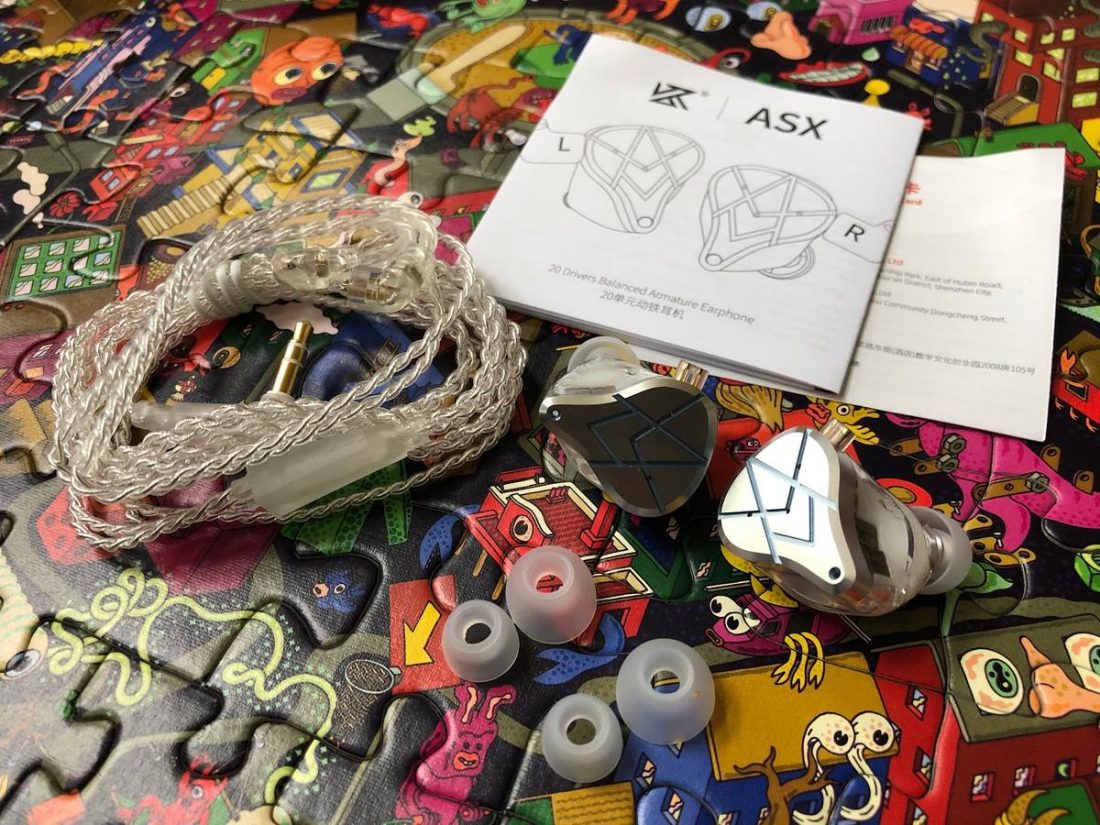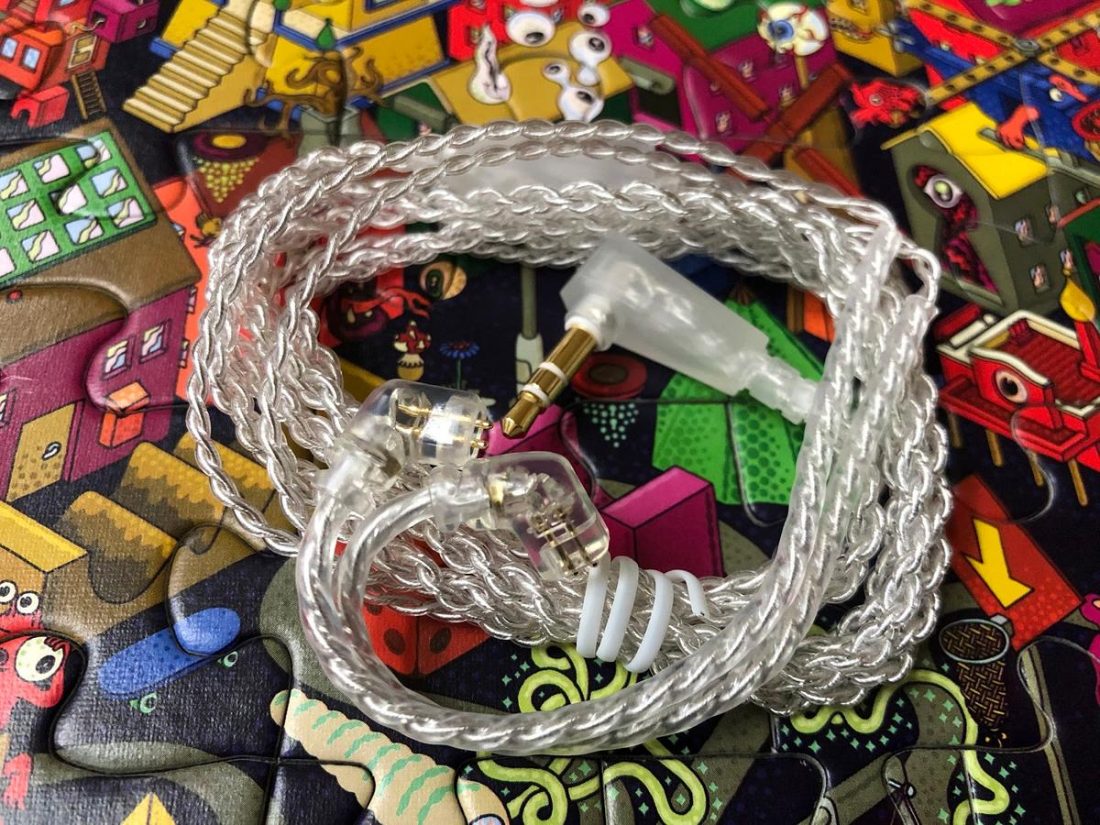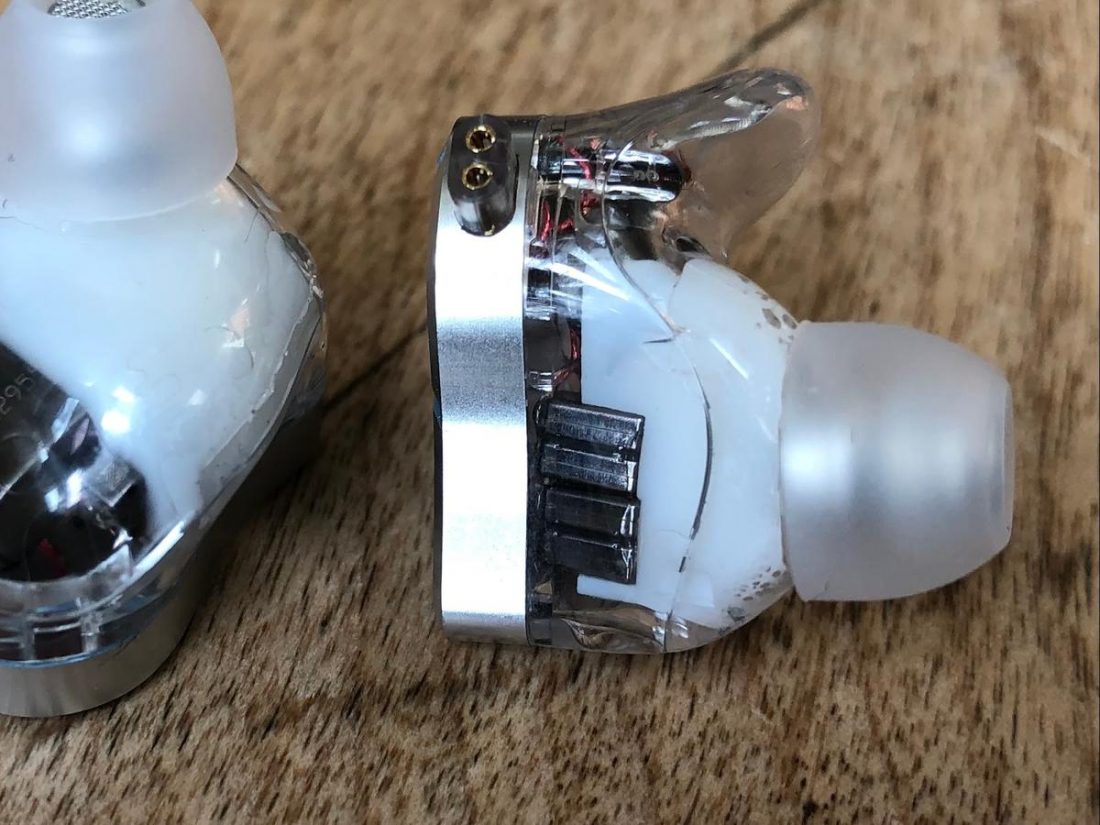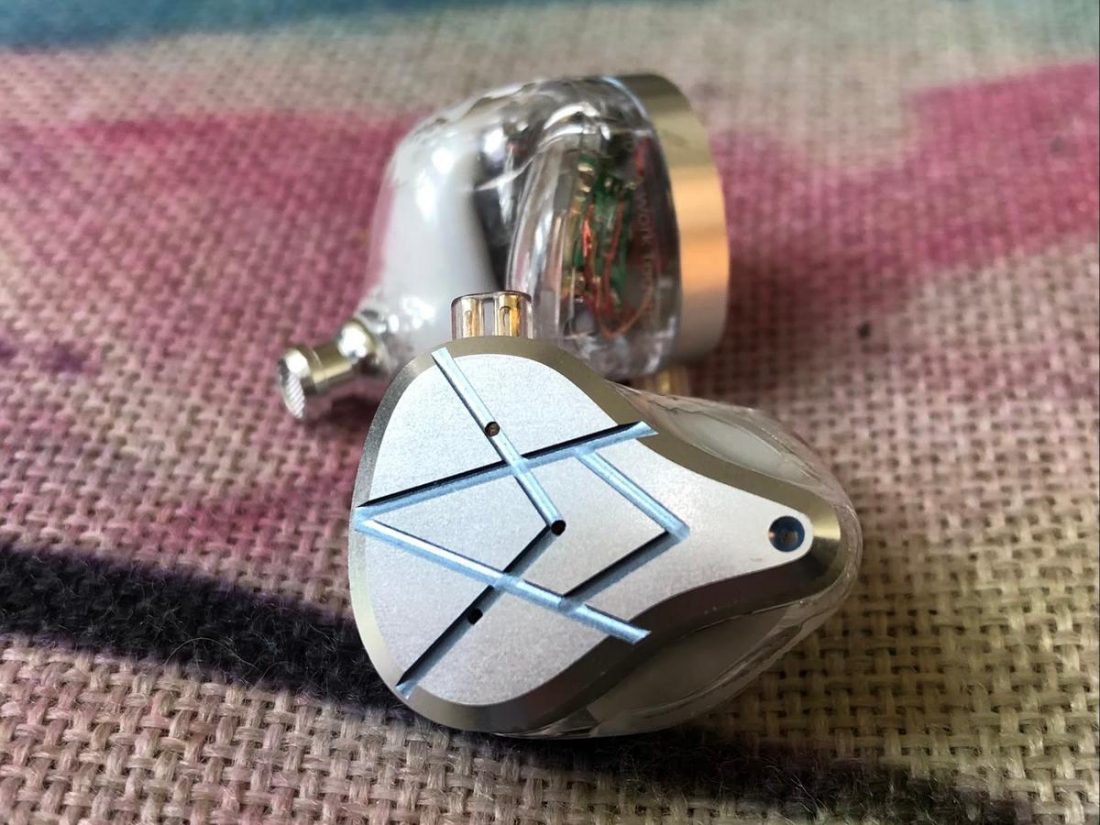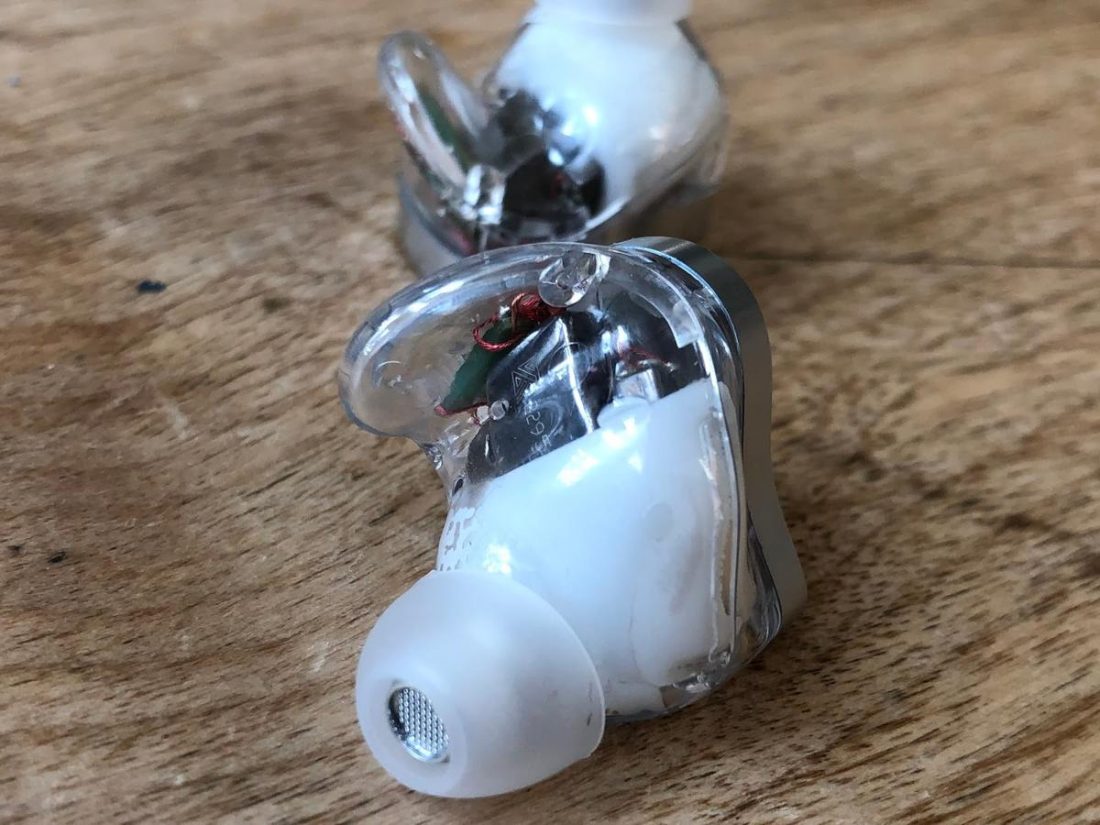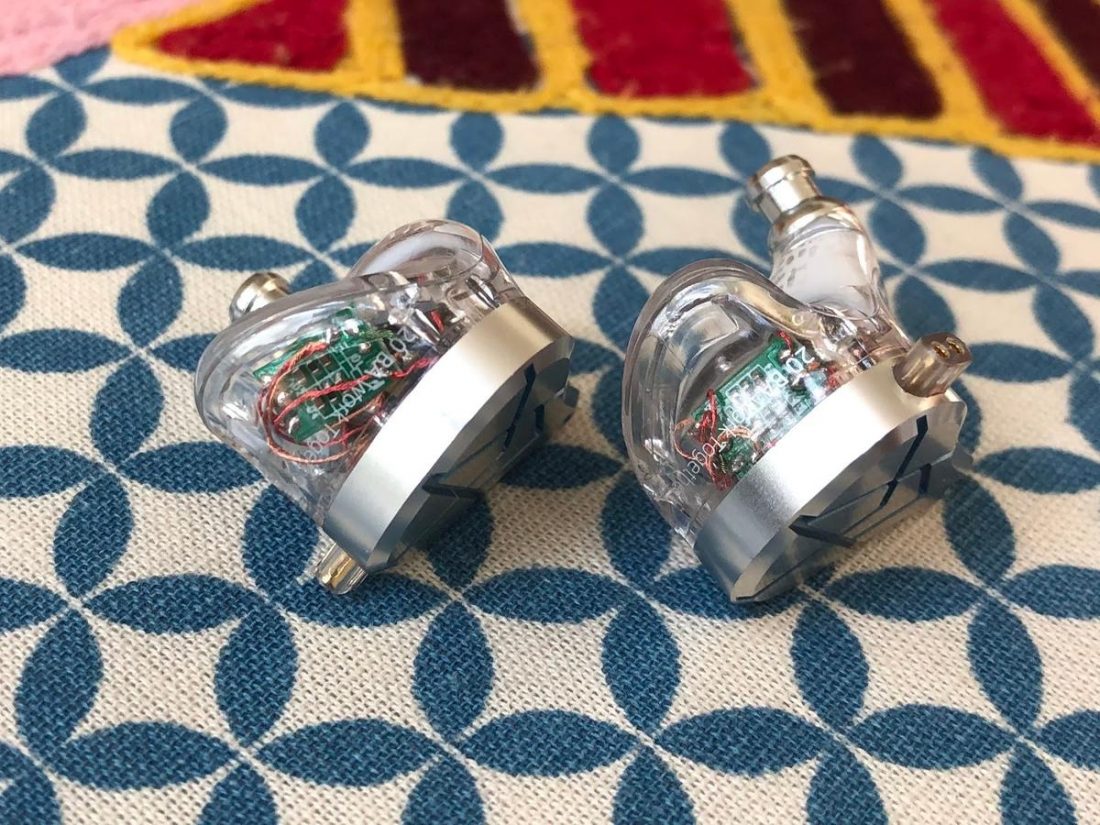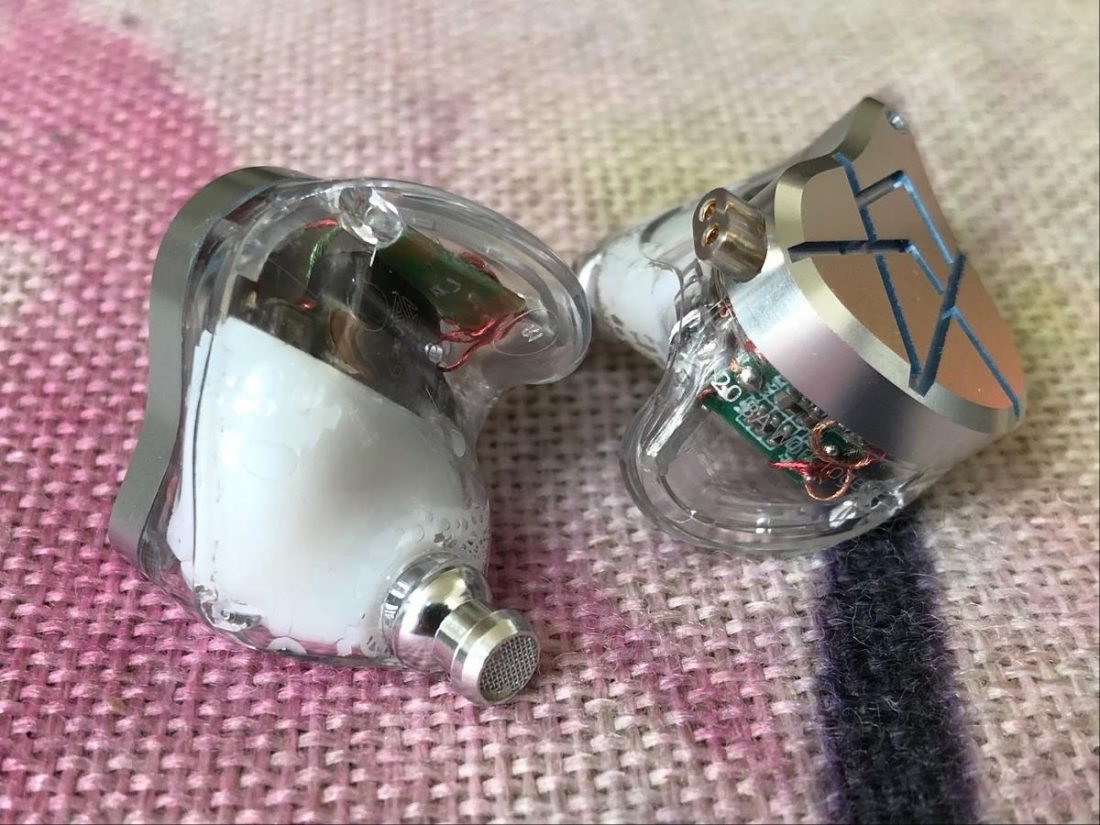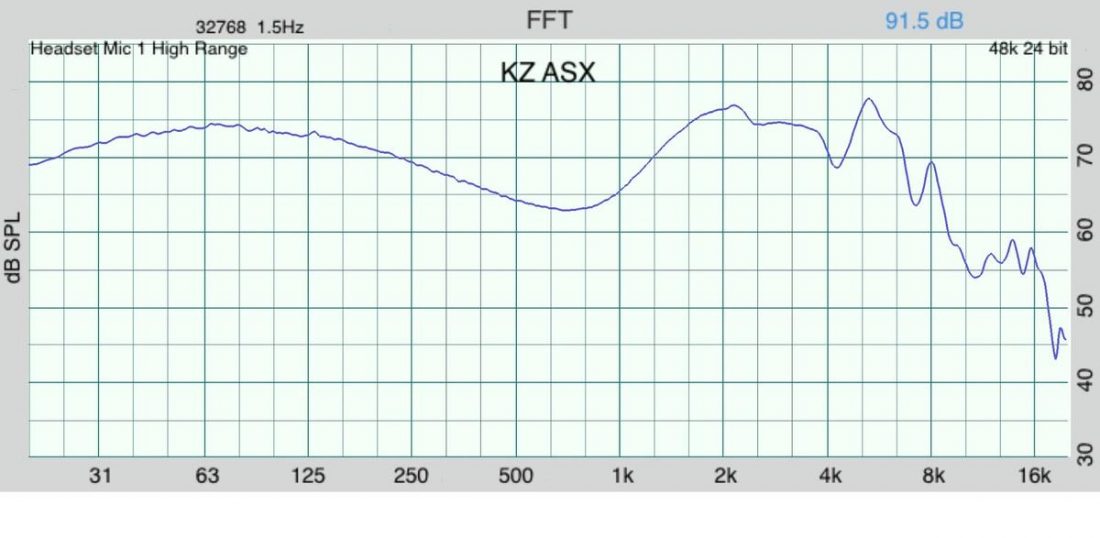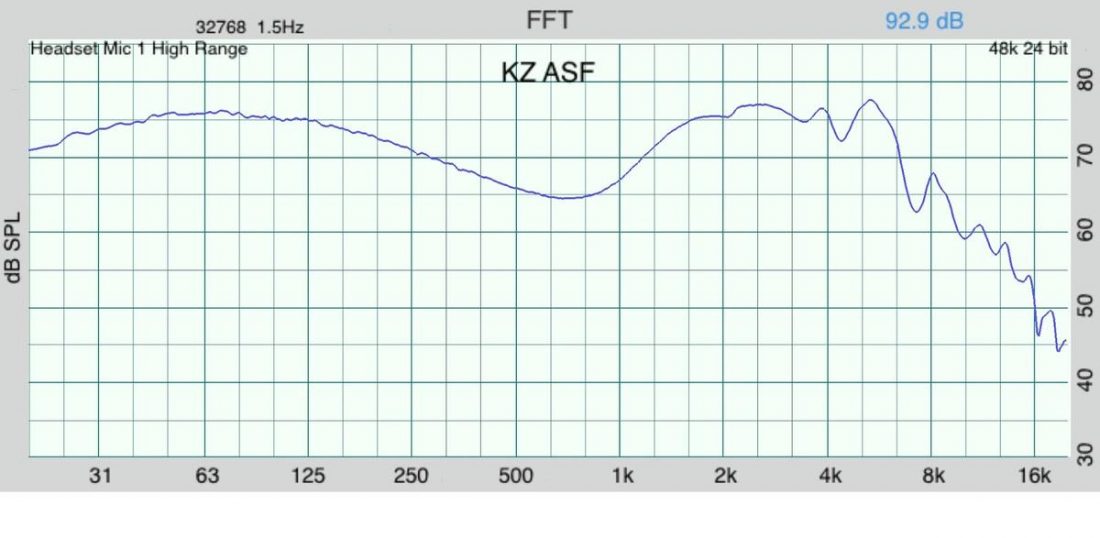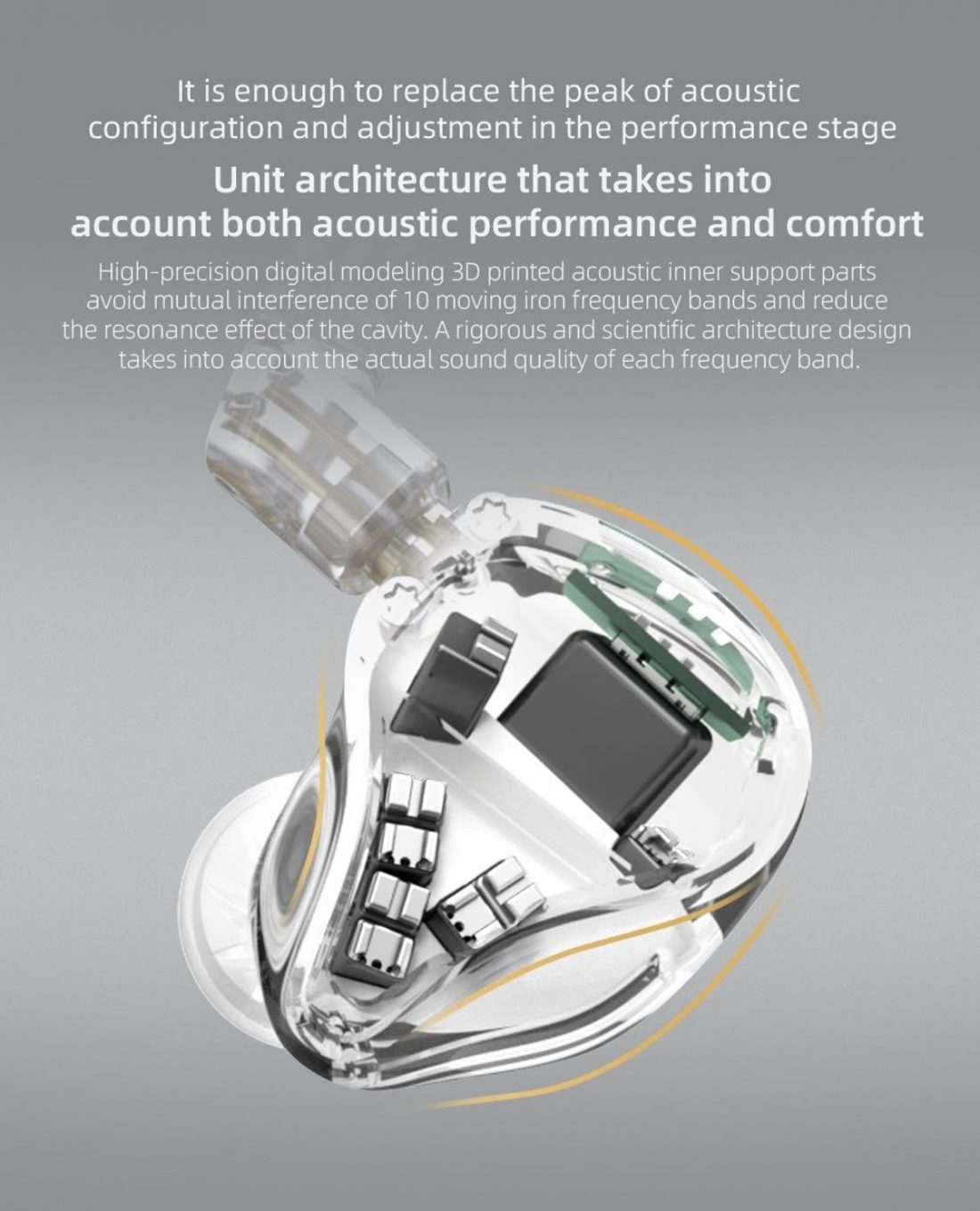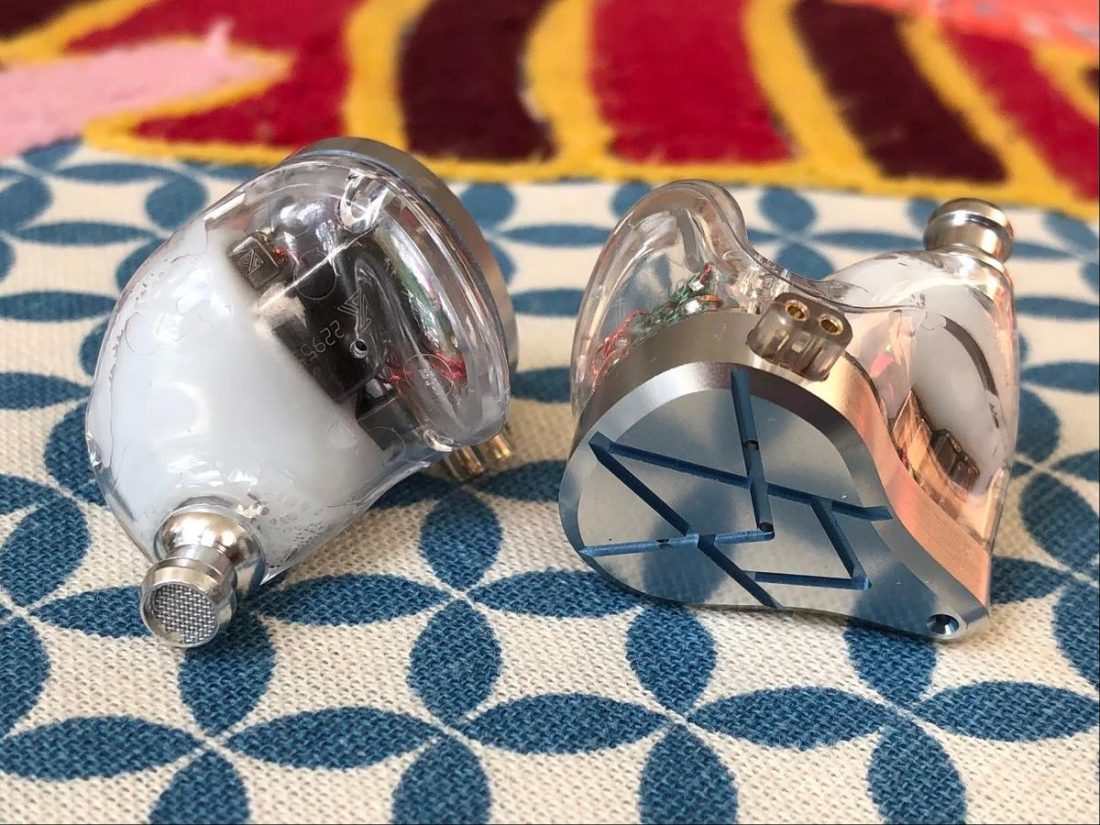Hot on the heels of the 5 Balanced Armature (BA) drivers per side, KZ ASF, comes the big brother, 10-drivers per side, ASX model. Sharing the same resin shell topped with a different metal faceplate, and simply more of the same drivers found in the ASF, this new Knowledge Zenith flagship is priced at the upper end of KZ’s market range (USD $100). While it’s certainly a technological achievement to have 20 drivers and 2 crossover circuits contained in (relatively) tiny in-ear monitors (IEMs), one does have to wonder when enough is enough. Is there anything to be gained by adding more driver count? Does it help the sound? The ASF are pretty lackluster in the sound quality department. KZ’s marketing seems awfully proud of the redesigned BA drivers in these new IEMs, but upon critical listening and comparison, the reality doesn’t live up to the hype. The result of the ASF’s tuning is a lack of high and low-frequency extension and a scooped-out midrange. To be fair, these are USD$60 IEMs, so one’s expectations have to be tempered by the price, but objectively, they do not sound terrific regardless of price. So, in walks the new mega-driver big brother, the ASX. Perhaps doubling the driver count (and almost the price) will fill in the missing frequencies from the ASF. If KZ wants the ASX to compete on the $100 level, things need to dramatically improve.
KZ Acoustics Overview
KZ Accostics was founded in 2008 by classical musician Zen Li and former Audio-Technica engineer Keith Yue. It is a public brand for the Shenzhen Yuanze Electronics Company located in Guangdong, China. In 2010 KZ started selling products on the Chinese shopping website Taobao, and in 2013 the KZ brand started being widely promoted. Most recently in 2019, KZ has started producing TWS IEMs. KZ has generated a huge amount of industry buzz by creating products that have seriously redefined the ratio of price to performance. Initially, there was seemingly unending hype over KZ (as of writing: approximately 3500 pages in a single Head-Fi post). The caveat? Most discussions conclude with the idea that although their IEMs may not produce the absolute best sound, they are difficult to beat at the low price point. More recently, some of their more technologically advanced and correspondingly higher-priced models, have tried to elevate the brand as a mainstream competitor. However, KZ has received criticism for copying the design and form factor of high-end models from Campfire Audio and Audio-Technica.
KZ IEM Series
KZ is also known for releasing many different models, so it gets convoluted when trying to figure out their hierarchy of IEMs. In a nutshell, the KZ offerings include the following series:
AS: ASF, ASX, AS06, AS10, AS12, AS16 (balanced armature drivers – # denotes total drivers) AT: ATE, ATES, ATR (single dynamic driver) BA: BA10 (balanced armature drivers – # denotes total drivers) BT: BTE (hybrid BA and dynamic drivers – Bluetooth) ED: EDR2, EDX, ED3, ED4, ED7, ED9, ED12, ED15, ED16 (typically a single dynamic driver – ED15 and ED16 are hybrid) ES: ES3, ES4 (hybrid – 1 BA + 1 dynamic driver) HD: HDS3, HD9 (single dynamic driver) ZS: ZSA, ZAX, ZSE, ZSN, ZSN Pro, ZSN Pro X, ZSR, ZST, ZST Pro, ZST Colorful, ZST X, ZSX, ZS1, ZS2, ZS3, ZS4, ZS5 (v1 and v2), ZS6, ZS7, ZS10, ZS10 Pro, (ZS1-3 and ZSE are dual dynamic driver, other ZS are hybrid) YZ: YZ41, YZ46, YZ63, YZ66 Bluetooth TWS Models: E10, SA08, S1, S1D, S2, T1, Z1
CCA and Tripowin
To further complicate things, KZ has recently started releasing IEMs under other brand names as well. Clear Concept Audio (CCA) and Tripowin are sister brands and have released very similar IEMs (sharing components, technology, design, ear tips, etc. with KZ models). While alike, the sister IEMs are slightly altered products than the KZ versions. Differences can include driver selection, cables, shape, internal structure, etc. and it varies by model. However, they are targeted at the very same budget IEM market.
CCA IEMs
C04: Hybrid – 1 BA + 1 DD. Similar to the KZ ZSN Pro housing design. Again # denotes the total number of drivers per both IEMs. C10: Hybrid – 4 BA + 1 DD. Similar to the KZ ZSN housing design and the ZS10 driver lineup (but with a different dynamic driver). C10 Pro: Hybrid – 4BA + 1x 10mm DD. 2x 30095 BA + 2x 50060 BA per side. C12: Hybrid – 5 BA + 1 DD. Similar to the AS16 housing design and the ZSX driver lineup. Uses a single 300095 treble BA per side. C16: 8 BA. Similar to the AS10 housing design. 2x 22955 bass BA, 2x 29689 midrange BA + 4x 30095 treble BA per side. Differs from AS16 which uses 4x 31736 treble BA. CA4: Hybrid – 1BA + 1x 10mm tesla DD (shared with the ZS10 Pro) + 1x 30095 BA per side CA16: Hybrid – 7BA + 1x 7mm DD. 3x 30095 high frequency balanced armatures + 4x 50024 mid-frequency balanced armatures. Bluetooth TWS Models: CX4, CX10
Tripowin IEMs
TP10: 5 BA. Similar to the AS16 housing design but with a flat front. 1x 22955 bass BA, 2x 29689 midrange BA, and 2x 30095 treble BA per side.
ASX Specifications
Connectivity: Wired Earphone type: In-Ear Drivers: 22955s BA1 (low frequency); 29689s BA1 (midrange); 30017s BA4 (high-frequency); 31736s BA4 (mid-high frequency) Sensitivity: 106dB Impedance: 20Ω Frequency range: 10Hz-40kHz Plug type: 3.5mm Connector : 0.75mm 2-pin Cable Length: 125±5cm Product Weight: 27±3g Color Options: Black or Silver/Clear Microphone: Optional
ASX Packaging
Unfortunately, KZ does not appear to believe in improving the packaging or included accessories when they increase the price of IEMs. Identical to the ASF, you’ll find the same black cardboard box, inner foam sheet, cable, and extra new clear ear tips.
In the box
ASX IEMs. Silver-colored cable with clear rubber connectors. A plastic bag containing 2 pairs (small and large) of star patterned clear thin silicone ear tips. The ear tips on the IEMs themselves are medium-sized. Metal nameplate. Warranty card. 12 months if sold by the KZ official store. Instruction card. Small cardboard square “certificate”.
Cable
Back again is the new KZ silver-coated copper, 100-core cable from the ZAX and ASF. It’s thinner and more fragile than the previous bronze and copper-colored KZ cables. KZ claims that the “…included silver-plated 100 core cable greatly improves transparency, separation and sound field. It reduces loss in transition.” Regardless, it’s lightweight, non-microphonic, and works just fine. KZ insists on using their protruding 0.75mm IEM connectors, which reportedly are somewhat prone to breakage, and are not compatible with the more common 0.78mm flat 2-pin connector. I’ve not had any issues with this connector type, other than the unnecessary complication of finding compatible cables or Bluetooth adapters.
ASX Design
I’m usually quite impressed and satisfied with KZ’s manufacturing process and its typical standard of marrying a metal faceplate seamlessly with smooth resin shells. Unfortunately, with the ASF and ASX (which share the same, albeit different colored, resin shells) there is a seam that runs along the middle of the body. This seam is unsightly and not perfectly smooth. The aluminum ASX faceplate differs quite dramatically from the ASF. Where the ASF have a raised and textured pattern, the ASX are drilled and engraved with fine ‘A’ and ‘V’ shaped geometric lines. On the silver-colored faceplates, the grooves are filled with a light blue color, while the black faceplates have gold lines. Like the ASF, the narrow faceplates minimize the large and bulbous shape of the resin body that resides beneath them. The resin is very clear and gives a good look at the internals. “Equipped with an imported resin body, the headset has both exquisite luxury and crystal clear effect.” Unfortunately, this is a double-edged sword, as KZ’s decision to use a large (and unsightly) white internal plastic piece to channel the BA drivers to the nozzle is a questionable one.
Comfort
The ASX shares the same large and chunky shape as the ASF. Fittingly, as with the ASF, I find the ASX reasonably comfortable in my ears, but the short nozzle, and inability to reposition due to size, doesn’t quite make for a good seal. The ear tips are the same new (non-Starline) thin and clear silicone as included with the ASF.
ASX Internals
With the ASF, KZ introduced redesigned BA drivers, sharing the same model number as their predecessors, but now with an ‘s’ suffix. Here are the claimed improvements over the originals:
30017s – “Compared with the ordinary 30017 balanced armature unit, the high-frequency density and high-frequency extension have been increased rapidly, bringing a subtle and real experience.” 31736s – “Significantly improved resolution, precise instrument phase, clear and delicate texture, to ensure rich sound quality.” 29689s – “The mid-frequency is deeply optimized making the voice more beautiful and sweet, durable and infectious.” 22955s – “The diaphragm area far exceeds other moving iron units, providing low distortion, fast and energy-rich low frequency far better than other moving iron units.”
While the ASF uses only a single version of most of the drivers and two 31736s drivers for combined mid and high frequencies, the ASX doubles the driver count. The motto printed on the end of the ASX furthest from the nozzle (which is KZ’s standard operating practice to do so) is “20 BA Work Together.” The new driver arrangement for the ASX is 22955s BA1 (low frequency), 29689s BA1 (midrange), 30017s BA4 (high-frequency), and 31736s BA4 (mid-high frequency). This would seem to indicate that the midrange and high frequencies should sound significantly different from the ASF. Bluntly, that would be a good thing. The ASF midrange is quite recessed with little high-frequency extension. “High-precision digital modeling 3D printed acoustic inner support parts avoid mutual interference of 10 moving iron frequency bands and reduce the resonance effect of the cavity. A rigorous and scientific architecture design takes into account the actual sound quality of each frequency band… The complex and accurate frequency division circuit adjusts 10 balanced armature units to the ideal state, and the 3-channel conduit gives you pure sound quality with almost no impurities… “With professional front end and lossless audio source, the effect is better.” – ASX marketing material We shall see about that.
ASX Sound
Let’s remember that this is the current flagship for KZ. Currently, the ASX is their most expensive model and only surpassed in the past by the cost of the AS16 (8 BA driver per side). “ASX carries our years of experience in acoustic research and development. Break through the bottleneck of traditional acoustic design again. Presented with a high-dimensional acoustic expression. Set a new professional acoustic benchmark product.” – ASX marketing material KZ’s marketing department can write some impressive hyperbole. To me, a flagship product carries importance. It signifies the best that a company can produce. It sets the standard by which they can be judged. With the addition of 5 extra drivers focused on the midrange and high frequencies, I expected significant changes (and improvement) over the lesser ASF model. The ASX sound much more like their little sibling than different. In fact, you could be forgiven if while A/B testing between them, you mistake which model is currently in your ears. Perhaps the detail and nuances of the sound are oh-so-slightly better portrayed with the ASX over the ASF. There may be a touch more air and lightness. A shade more resolution. Rather than marveling about what an improvement all those drivers made to the sound, I’m left wondering if they are actually doing anything. The differences, if I’m being generous, are subtle. Here you have a v-shaped sounding (in the way the midrange is recessed) all BA IEM, with minimal sub-bass extension and a dull top end. Soundstage and imaging are limited, and simply not on par with the best examples in this price point. Strong performers like the Thieaudio Legacy 3 and the Moondrop Starfield sonically put the ASX to shame.
Bass
Mid and upper bass frequencies are delivered by the redesigned BA drivers in quantity if not overly in quality. Sub-bass is limited which seems to compress the overall sound signature. The tendency towards upper bass frequencies infringes on the midrange and adds a warm but not especially realistic, tonality.
Midrange
All those BA drivers don’t quite capture the midrange frequencies. The especially important middle of the midrange is lacking in presence, with steep edges into the lower and upper-frequency ranges. The result is a touch dull and lacking in life. Voices and instruments are a bit swallowed by the bass and lower treble frequencies. These peaks rob the midrange of natural presentation. If your ‘thing’ is sweet, sweet midrange reproduction… look elsewhere.
Treble
The ASX treble does differ from the ASF. With a little less energy between 2-4kHz, they may be a touch less nasally and fatiguing, but the overall difference is fairly minor with so much of the rest of the sonic reproduction essentially identical. The upper treble frequencies are rolled off. Cymbals crash, but with little shimmer or shine. The overall signature is compressed, rather than feeling airy or light. The entire sound lacks proper extension.
Conclusion
I’ve got a riddle for you. If it looks like the ASF, sounds like the ASF, but costs almost twice as much, what is it? The ASX. KZ’s new flagship IEMs are a disappointment. Perhaps they make the ASF look a bit improved in comparison, simply because they represent greater value for your money. That doesn’t make either of them sound any better though. KZ went the wrong way with these IEMs. They should have worked with the AS16 design and sound signature. That showed promise of a more mature and interesting design and sound. Instead, it seems they tried to create a v-shaped sounding BA design, and somehow that brought out all the limitations and none of the potential benefits. I’ve been a long-term supporter of KZ’s bang-for-the-buck value proposition and am relatively impressed at what they can achieve for a low cost. But when the new flagship is a repackage of the same body, accessories, box, and (essentially) sound, of a lesser model, yet with a higher price tag, my faith starts to suffer. KZ has done far better before. Many of their current models, such as the ZAX offer more fun and a better-extended sound signature for significantly less money. Hard pass on the ASX and let’s hope the next flagship is back on track.
